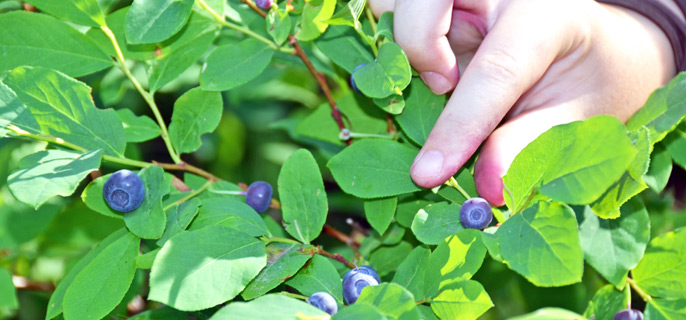
PHOTO BY STEVE MEYERS
[quote style=”2″]This story first appeared in the September 2012 issue of Ruralite[/quote]
Each summer of her childhood, Linda Jones would find herself swept up into a family expedition to the woods to pick wild huckleberries.
“My mother’s mother would say, ‘It’s time to get the berries,’ and we’d pack up and go. It wasn’t a day or weekend, it was at least a week or two weeks. She would get what she needed for the year.”
For Jones, a member of the Confederated Tribes of the Umatilla Indian Reservation, picking huckleberries is a cherished family tradition. For the CTUIR and other tribes around the Northwest, the huckleberry is honored as a treasured “first food.”
It’s exalted among the salmon, game, roots and berries that have nourished their families past and present.
In the longhouse near Pendleton, hundreds gathered for the CTUIR’s huckleberry feast one Sunday in August, an annual tradition meant to honor the huckleberry and to let tribal members know the berries are ready to gather.
“Our belief is even though we see them, check on them and pick them, we don’t eat the huckleberries until we have our feast,” Jones says. “We don’t even taste them until then, so we can all taste them at the same time.”
For some, the no-tasting rule can be challenging. “It’s very hard,” she said, laughing.
For many people, “The huckleberry is one of their favorite foods once they’ve had their first taste of it,” Jones says. “It’s also an acquired taste. They can be sweet, but they can be tart. There are people who do not like them.”
Cheryl Shippentower, a CTUIR plant ecologist, says Vaccinium membranaceum, known as the big huckleberry, is found in the cool, moist shade of grand fir stands, in mid-to-upper elevations, generally about 4,000 to 6,000 feet.
The grouse huckleberry (Vaccinium scopariuan), an edible red berry, tiny and delicious, can be found in cold and dry sites, generally in lodgepole stands.
The Tollgate and Jubilee Lake areas are a good place to start, Jones says. Don’t be discouraged if you can’t find them driving along the road. They’ve probably already been picked. “You can walk away from the road and find them plentiful.”
The peak season for tasty huckleberries tends to be mid-to-late August. The scent of huckleberries in the air is unforgettable – one Idaho researcher says its complex flavor is a combination of 35 chemicals.
Berries and bushes are delicate; pick them by hand. “The berries are picked individually by our fingers,” Jones says. “Treat the plants with care so they will continue to reproduce.”
Veterans of huckleberry expeditions say to clean and refrigerate huckleberries as soon as possible. Cooking them down to a jam is popular, as is freezing for use in pies, pancakes and muffins. One suggestion is to wash and dry the berries, then freeze them on cookie sheets lined with wax paper.
Expect a few minor tragedies, from accidentally spilling your hard-won berries onto the ground to being chased by wasps.
Adds Jones, “The tradition has been with us since before I came into the world, and I hope the young ladies continue to do this and know why we do it. I tell them, ‘It isn’t easy, but it’s worth it.’ ”








